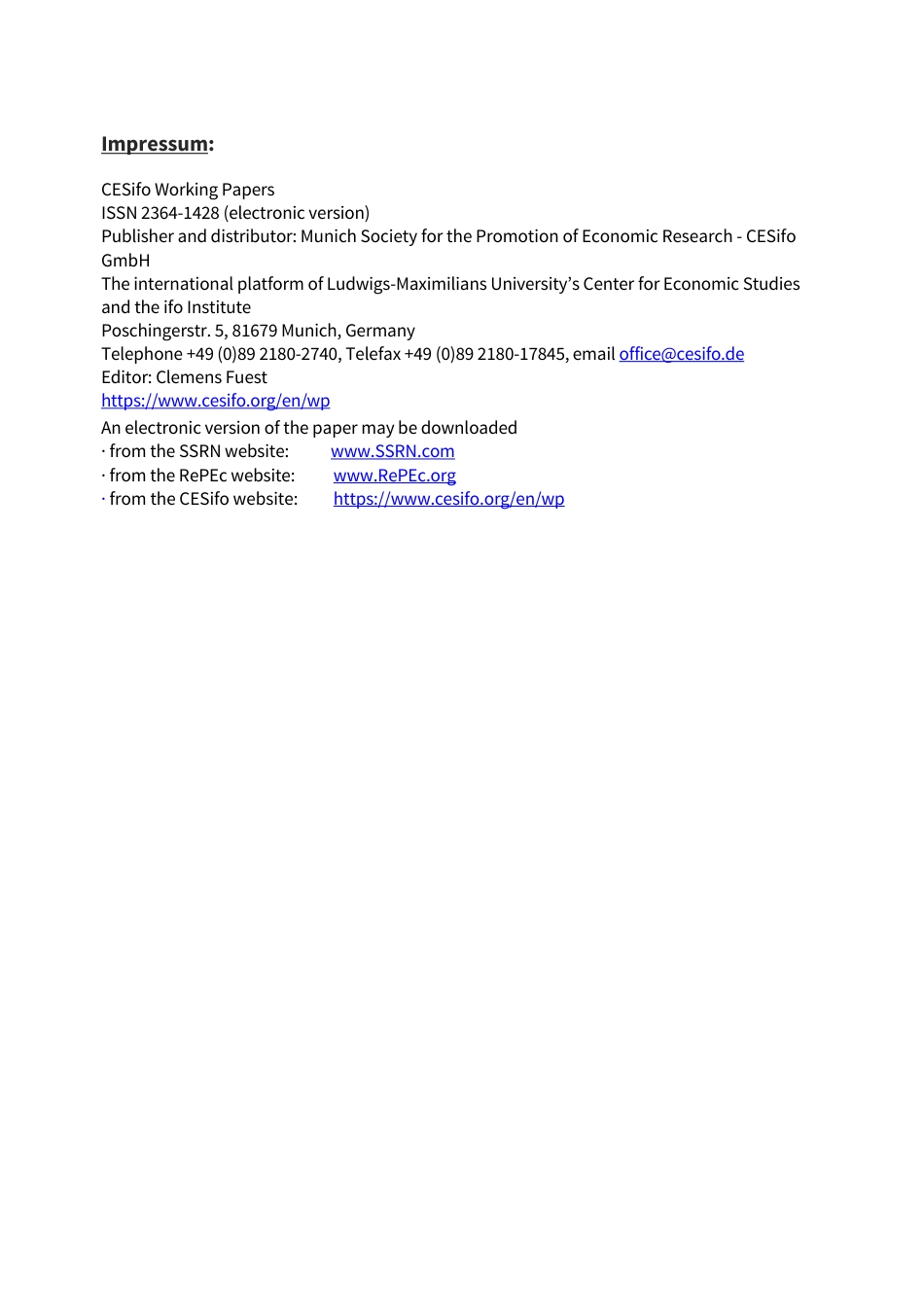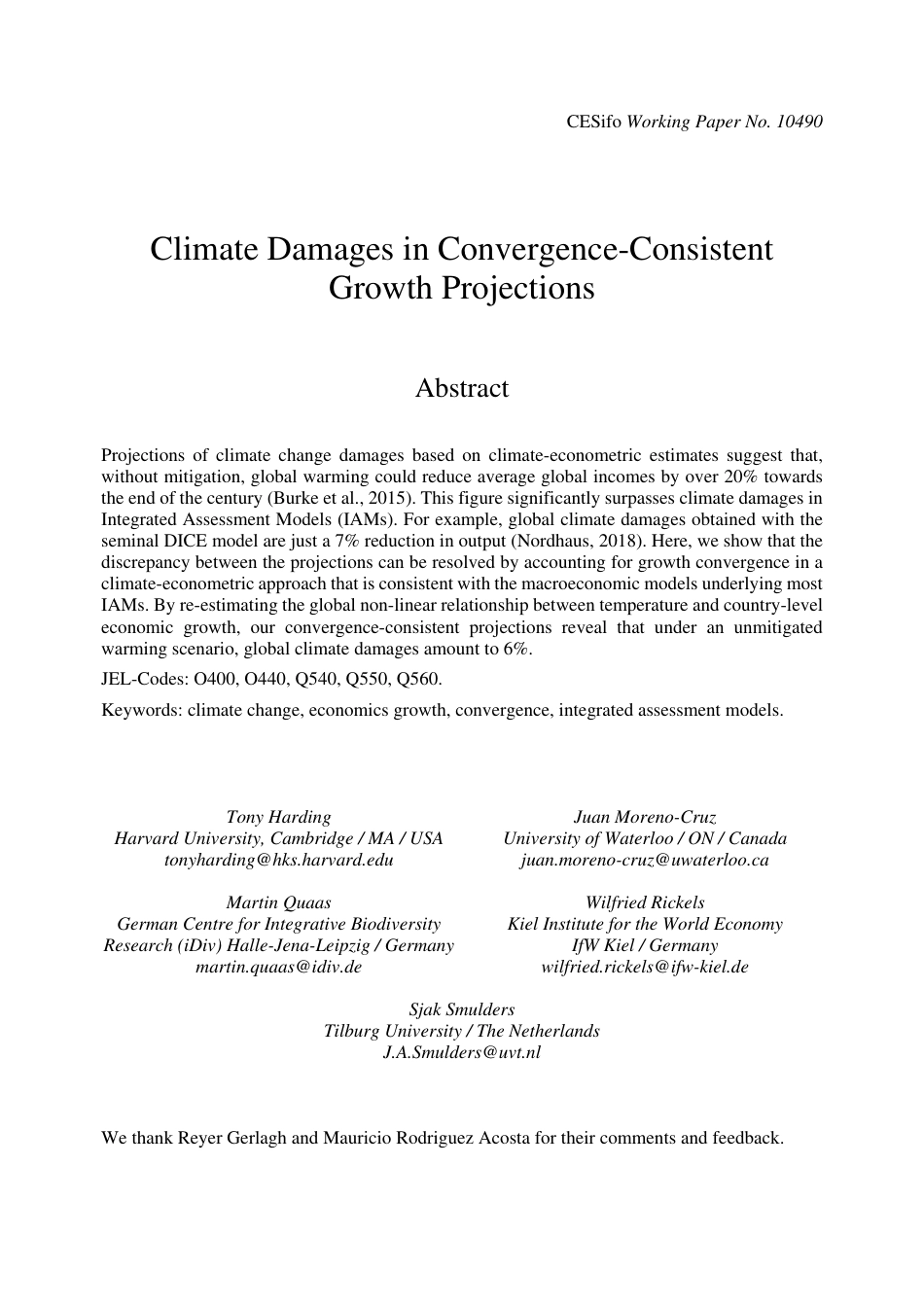10490 2023 June 2023 Climate Damages in Convergence-Consistent Growth Projections Tony Harding, Juan Moreno-Cruz, Martin Quaas, Wilfried Rickels, Sjak Smulders Impressum: CESifo Working Papers ISSN 2364-1428 (electronic version) Publisher and distributor: Munich Society for the Promotion of Economic Research - CESifo GmbH The international platform of Ludwigs-Maximilians University’s Center for Economic Studies and the ifo Institute Poschingerstr. 5, 81679 Munich, Germany Telephone +49 (0)89 2180-2740, Telefax +49 (0)89 2180-17845, email office@cesifo.de Editor: Clemens Fuest https://www.cesifo.org/en/wp An electronic version of the paper may be downloaded · from the SSRN website: www.SSRN.com · from the RePEc website: www.RePEc.org · from the CESifo website: https://www.cesifo.org/en/wp CESifo Working Paper No. 10490 Climate Damages in Convergence-Consistent Growth Projections Abstract Projections of climate change damages based on climate-econometric estimates suggest that, without mitigation, global warming could reduce average global incomes by over 20% towards the end of the century (Burke et al., 2015). This figure significantly surpasses climate damages in Integrated Assessment Models (IAMs). For example, global climate damages obtained with the seminal DICE model are just a 7% reduction in output (Nordhaus, 2018). Here, we show that the discrepancy between the projections can be resolved by accounting for growth convergence in a climate-econometric approach that is consistent with the macroeconomic models underlying most IAMs. By re-estimating the global non-linear relationship between temperature and country-level economic growth, our convergence-consistent projections reveal that under an unmitigated warming scenario, glob...



